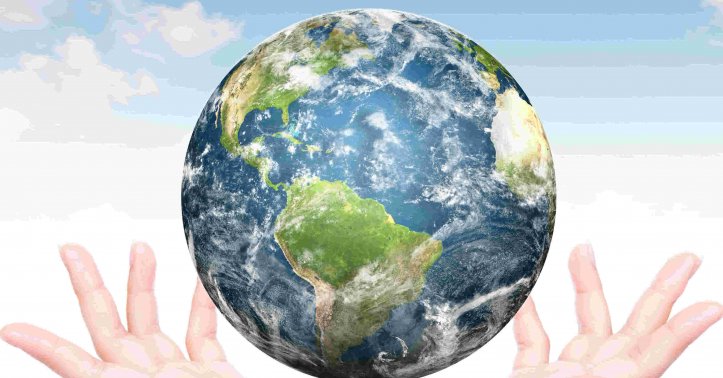
Safeguarding Mother Earth
We are not separate from mother earth; we are an interconnected part of a vast, complex web of life which consists of
Life-Sustaining Resources: Clean air, fresh water, fertile soil, and a stable climate.
Biodiversity: The incredible variety of plants, animals, and ecosystems that provide food, medicine, resilience, and wonder.
A Stable Climate: A natural balance that supports human civilization, agriculture, and settlement patterns.
-
Cultural and Spiritual Value: For many, nature is a source of inspiration, peace, and cultural identity.
The Major Threats We Face
Safeguarding Earth requires understanding what we are protecting it from:
-
Climate Change: Driven by greenhouse gas emissions from burning fossil fuels, deforestation, and industrial agriculture, leading to extreme weather, rising sea levels, and ecosystem disruption.
-
Pollution: Contamination of air, water, and soil with plastics, chemicals, heavy metals, and waste, harming wildlife and human health.
-
Deforestation & Habitat Loss: The clearing of forests, wetlands, and other wild spaces for agriculture, urban development, and resources, leading to massive biodiversity loss.
-
Loss of Biodiversity: Species are going extinct at an alarming rate due to habitat loss, pollution, climate change, and overexploitation, weakening ecosystems' ability to function.
-
Resource Depletion: Overconsumption of finite resources like freshwater, minerals, and fertile topsoil at rates faster than they can replenish.
How to Safeguard Mother Earth: Action at All Levels
1. Individual and Community Actions (What You Can Do)
-
Rethink Consumption:
-
Reduce, Reuse, Recycle: Prioritize reducing what you buy. Choose reusable items (bags, bottles, containers) over single-use plastics. Recycle properly.
-
Choose Sustainable Products: Support companies with ethical and eco-friendly practices. Buy local and seasonal food to reduce transport emissions.
-
Minimize Food Waste: Plan meals, compost scraps, and understand expiration dates.
-
Transform Your Diet:
-
Reduce Meat Consumption: Industrial animal agriculture is a major driver of deforestation, water use, and methane emissions. Incorporating more plant-based meals has a significant positive impact.
-
Revise Your Transportation:
-
Walk, Bike, Use Public Transit: Whenever possible.
-
Carpool or Drive Efficiently: Combine errands, maintain your vehicle, and consider an electric or hybrid car for your next purchase.
-
Conserve Energy and Water:
-
Home Efficiency: Switch to LED bulbs, unplug electronics, use a programmable thermostat, and ensure your home is well-insulated.
-
Use water wisely: Don't waste water unnecessarily. Minimise as much as possible.
-
Connect and Advocate:
-
Get Outside: Foster a love for nature by spending time in parks, forests, and beaches.
-
Support Local Environmental Initiatives: Join a community clean-up, tree-planting event, or a local conservation group.
2. Systemic and Political Actions (Driving Large-Scale Change)
Individual actions are crucial, but systemic problems require systemic solutions. This involves advocacy and holding leaders accountable.
-
Support and Vote for Leaders who prioritize environmental policies, climate action, and conservation.
-
Advocate for Policies that:
-
Transition to Renewable Energy: Incentivize solar, wind, and geothermal while phasing out fossil fuel subsidies.
-
Protect Wild Spaces: Create and fund national parks, marine sanctuaries, and wildlife corridors.
-
Promote a Circular Economy: Legislation that holds producers responsible for the entire lifecycle of their products (e.g., packaging waste).
-
Invest in Green Infrastructure: Modernize public transit, build energy-efficient grids, and develop sustainable cities.
-
Support Local Stewardship Respecting existing land rights and traditional knowledge is one of the most effective conservation strategies.
3. The Role of Technology and Innovation
-
Renewable Energy Tech: Advances in solar, wind, battery storage, and green hydrogen.
-
Carbon Capture: Developing technologies to remove CO2 from the atmosphere.
-
Agricultural Innovations: Sustainable farming practices, precision agriculture, and alternative proteins (e.g., plant-based and cultured meat).
-
Conservation Tech: Using AI, drones, and satellite monitoring to track deforestation, poaching, and wildlife populations.
A Shift in Mindset: From Dominion to Kinship
Ultimately, safeguarding Mother Earth is not just about a checklist of actions. It's about a fundamental shift in how we see our place in the world.
-
From Consumer to Citizen: Seeing ourselves not just as consumers but as active citizens of a global ecosystem.
-
From Short-term to Long-term: Making decisions based on the well-being of future generations (a concept known as Seventh Generation thinking).
-
From Extraction to Regeneration: Moving beyond "sustaining" what's left to actively healing and regenerating degraded ecosystems.
Conclusion
By making conscious choices in our lives, we can indeed safeguard and heal mother earth. Let's act now.
By Jamuna Rangachari








